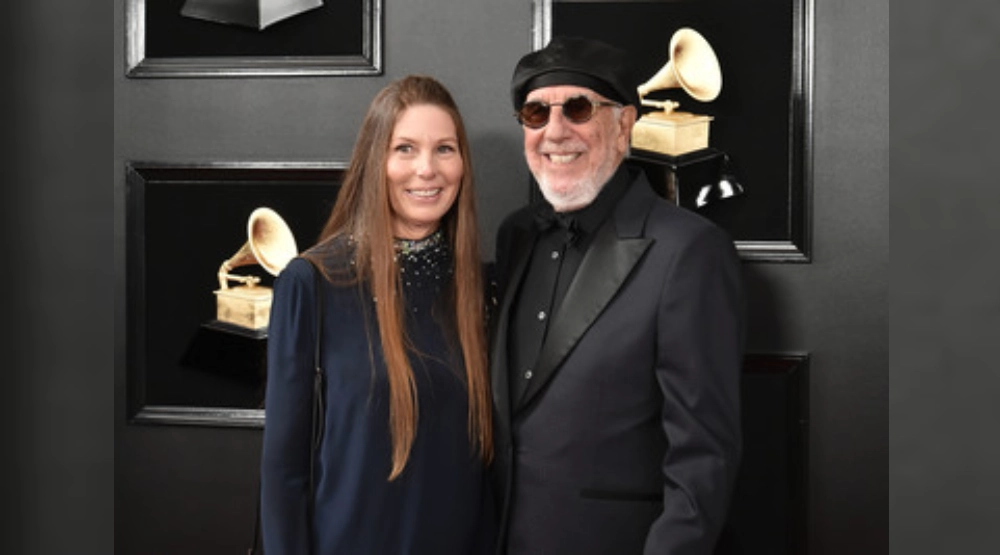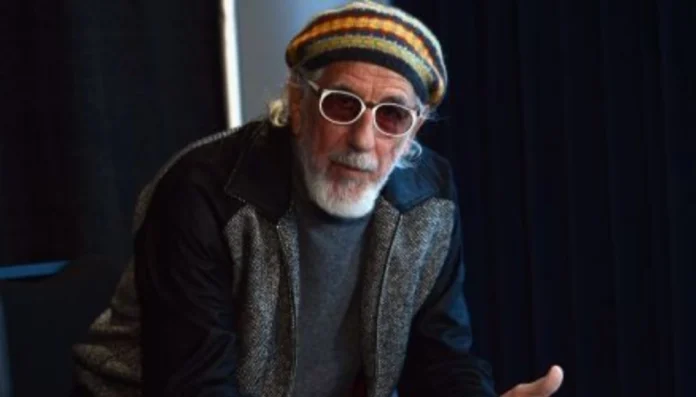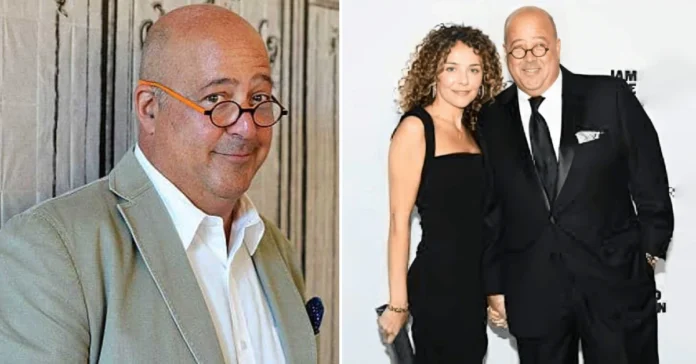Lou Adler sits among music’s most successful behind-the-scenes figures, with a fortune built across six decades in entertainment. Most current estimates place his net worth between $200-250 million as of mid-2025, though the exact figure remains private. This wealth comes from multiple revenue streams: record production, film work, real estate investments, and ongoing royalties from classic recordings.
Unlike many producers whose fortunes fade with changing tastes, Adler created an empire spanning music festivals, iconic albums, cult films, and prime real estate. His business moves show remarkable foresight – from launching Dunhill Records (later sold to ABC) to producing timeless works like Carole King’s “Tapestry,” which still generates substantial royalties today.
Who is Lou Adler?
Born December 13, 1933, in Chicago, Illinois, Lou Adler began as a music manager before becoming one of America’s most influential record and film producers. Now 91, he remains a recognizable figure at Lakers games, where he holds courtside seats next to Jack Nicholson.
Adler’s career spans rock’s formative years through its golden age. He worked with early surf rock acts, managed folk-rock pioneers, produced iconic albums, and created cult classic films. His keen ear for talent and business sense helped him spot commercial potential in artists others overlooked.
His influence extends beyond music. Adler co-founded the Monterey Pop Festival (1967), which introduced Jimi Hendrix and Janis Joplin to American audiences. He later co-owned the Roxy Theatre on Sunset Strip, which became a launching pad for countless artists.
Career Highlights
Adler’s career began managing Jan & Dean in the early 1960s before partnering with Herb Alpert for songwriting and production work. Their partnership yielded hits like Sam Cooke’s “Wonderful World” before Adler branched out on his own.
In 1964, he founded Dunhill Records, signing The Mamas & the Papas and producing their hits “California Dreamin'” and “Monday, Monday.” After selling Dunhill to ABC Records, Adler founded Ode Records, where he produced Carole King’s groundbreaking “Tapestry” album – which sold over 25 million copies worldwide and remains one of the best-selling albums ever.
His film career proved equally successful. Adler produced “The Rocky Horror Picture Show” (1975), which became the longest-running theatrical release in film history. He also directed Cheech & Chong’s first film “Up In Smoke” (1978), which launched the duo’s successful film career and grossed over $44 million on a modest budget.
Throughout the 1980s and beyond, Adler continued managing his music catalog while expanding his real estate holdings. His business longevity stands out in an industry where careers often flame out quickly.
Major Income Sources
Adler’s wealth comes from several key areas:
Music Production and Royalties: The cornerstone of his fortune stems from producing hit records. “Tapestry” alone has sold over 25 million copies, earning Adler substantial royalties for decades. His work with The Mamas & the Papas, Cheech & Chong, and other artists continues generating passive income through streaming, licensing, and physical sales.
Film Production: “The Rocky Horror Picture Show” cost just over $1 million to produce but has grossed more than $170 million through theatrical runs, home media, and merchandising. “Up In Smoke” and other Cheech & Chong films likewise proved profitable investments.
Business Ventures: Adler co-founded the Roxy Theatre on Sunset Boulevard, which became a legendary music venue. His stake in this business provided steady income beyond music royalties.
Festival Organization: The Monterey Pop Festival helped pioneer the modern music festival model. While a one-time event, it enhanced Adler’s reputation and opened doors for future business opportunities.
Strategic Sales: Selling Dunhill Records to ABC proved lucrative, allowing Adler to cash out his early success and reinvest in new ventures like Ode Records.
Financial experts note Adler’s business model stands out for creating long-term revenue streams rather than chasing quick profits. His catalog contains timeless works that continue earning decades after their creation.
Real Estate & Assets
Real estate forms a significant portion of Adler’s wealth. His property portfolio includes:
- Malibu Colony house: Adler owns a beachfront house in exclusive Malibu Colony, where neighboring homes sell for $25-50 million. He’s owned this property since the 1970s, making it one of his wisest investments as Malibu real estate values have skyrocketed.
- Aspen Property: Like many Hollywood executives, Adler maintained a vacation home in Aspen, Colorado – another area where real estate values have appreciated dramatically.
- Newberry House Sale: In September 2024, Adler sold a significant property (the Newberry House) for approximately $60 million, according to real estate records. This sale likely accounts for recent adjustments in his estimated net worth.
Beyond real estate, Adler’s visible assets include:
- Lakers Courtside Seats: For decades, Adler has maintained premium courtside seats at Lakers games, often seen beside Jack Nicholson. These seats represent both a luxury expense and a status symbol in Los Angeles.
- Art Collection: Though less publicized than his other holdings, Adler has collected art throughout his career, focusing on contemporary American artists.
- Business Interests: He maintains ownership stakes in several entertainment-related businesses, including his music publishing catalog.
Personal Life
Adler’s personal life has included multiple marriages and relationships with prominent women. Since 1992, he has been married to Page Hannah (sister of actress Daryl Hannah), despite their 30-year age difference. The couple has four sons together, while Adler has three additional children from previous relationships.
Perhaps the most dramatic chapter in Adler’s personal history occurred in 1976 when he became the victim of a high-profile kidnapping. Abductors held Adler for eight hours, releasing him after receiving a $25,000 ransom. This incident briefly made front-page news but didn’t deter Adler from his public lifestyle.
His longtime friendship with Jack Nicholson has made them fixtures at Lakers games since the 1970s, where their courtside presence became part of the team’s cultural identity. This public visibility helped maintain Adler’s relevance even as he became less active in daily production work.
Achievements & Awards
He received Grammy Awards for producing Carole King’s “Tapestry,” which won Album of the Year and Best Female Pop Vocal Performance in 1972.
In 2006, Adler earned induction into the Rock and Roll Hall of Fame as a non-performer, recognizing his crucial role in shaping American popular music.
The Hollywood Walk of Fame honored Adler with a star, cementing his legacy in entertainment history.
Beyond formal awards, Adler’s greatest achievement may be his cultural impact. The Monterey Pop Festival helped establish the template for music festivals that continues today with events like Coachella. Meanwhile, “The Rocky Horror Picture Show” created a unique audience participation culture that’s continued uninterrupted since 1975.
Lou Adler Net Worth Wife

Page Hannah Adler has been married to Lou since 1992. Their 30-year age gap raised eyebrows initially, but their marriage has proven remarkably stable by Hollywood standards, lasting over three decades.
Before Page, Adler’s romantic history included relationships with several notable women. He was previously married to actress and singer Shelley Fabares (1964-1980), known for her role in “The Donna Reed Show” and as Coach Hayden’s wife on “Coach.”
Adler also dated actress Britt Ekland briefly in the early 1970s. His relationship history reflects his deep connections within Hollywood’s entertainment community.
Page and Lou have four sons together: Manny, Ike, Pablo, and Oscar. Adler has three other children from previous relationships, including directors Cisco Adler and Nic Adler, who have followed their father into entertainment. This large blended family represents part of Adler’s legacy beyond his business success.
Career Longevity & Legacy
Few producers maintain relevance across multiple decades, yet Adler succeeded where many peers faded. Several factors explain this longevity:
- Diversification: Rather than focusing solely on hit records, Adler expanded into film, real estate, and venue ownership. This spreads risk across multiple industries.
- Quality Over Quantity: Unlike producers who chase trends, Adler focused on projects with lasting appeal. “Tapestry” and “Rocky Horror” continue earning money five decades later.
- Artist Development: Adler spotted raw talent and helped shape careers rather than seeking established stars. This approach created loyalty among artists and gave him greater creative control.
- Catalog Management: By maintaining rights to his productions, Adler ensured long-term income from his work. Music publishing rights form the backbone of many music executives’ wealth.
His business approach created lasting financial stability. While many producers earn large sums quickly before falling into financial trouble, Adler built sustainable income streams through strategic investments and catalog management.
Outlook & Valuation Factors
Several factors affect the valuation of Adler’s fortune:
- Real Estate Market Fluctuations: Malibu property values have generally trended upward, but can fluctuate with economic conditions. His Malibu Colony home represents a substantial portion of his wealth.
- Music Catalog Valuation: Recent years have seen music catalogs sell for unprecedented multiples. If Adler were to sell his production and publishing rights, they might fetch significantly more than traditional valuations suggest.
- Royalty Stability: Streaming has stabilized music royalties after years of declining physical sales. Classic albums like “Tapestry” continue generating steady income through new platforms.
- Estate Planning: At 91, Adler has likely implemented sophisticated estate planning strategies to preserve wealth for his seven children. Such planning often includes trusts and other vehicles that make precise net worth calculations challenging.
Financial analysts suggest Adler’s net worth will likely remain stable or grow modestly inthe coming years. Unlike entrepreneurs whose wealth ties directly to company stock prices, Adler’s diversified assets provide insulation from market volatility.
The Business Mind Behind the Music
What separates Adler from many music producers is his business acumen. While others focused exclusively on hit-making, Adler consistently spotted opportunities for vertical integration and brand building.
The Monterey Pop Festival showcases this vision. Beyond creating a historic music event, Adler secured film rights, resulting in the documentary “Monterey Pop” – which continues generating revenue through screenings and home media sales decades later.
Similarly, when he backed “The Rocky Horror Picture Show,” Adler didn’t simply finance a film; he helped create a cultural phenomenon with unprecedented longevity. The midnight screenings, audience participation rituals, and merchandising opportunities created multiple revenue streams from a single property.
His Roxy Theatre investment likewise demonstrated foresight. By establishing a premier venue, Adler gained not just a business but a platform for talent discovery and development. The club became both profitable and a strategic asset for his music interests.
Final Thoughts
Lou Adler’s $200-250 million fortune reflects decades of smart decisions in music, film, and real estate. Unlike many who achieved brief success during rock’s golden era, Adler created lasting value through strategic business moves and an eye for timeless creative work.
His wealth draws from diverse sources: ongoing royalties from classic recordings, cult film revenues, appreciated real estate holdings, and business investments. This diversification protected him from industry-specific downturns.
While more flamboyant music executives gained greater fame, Adler’s steady business approach yielded greater long-term security. His courtside Lakers seats beside Jack Nicholson remain perhaps his most visible status symbol, but his true legacy lies in the cultural touchstones he helped create – from “California Dreamin'” to “Tapestry” to “The Rocky Horror Picture Show.”




